PinotFile: 7.14 March 15, 2009
|
Santa Cruz Pinot NoirzAlthough one of the cradles of Pinot Noir in California, the Santa Cruz Mountains has been known more for its eccentric and Bohemian residents than its viticultural heritage. The reasons for this are evident when you drive through the hilly landscape. Unlike every other major winegrowing region in California, wineries and vineyards are not visible from the major thoroughfares. Vineyard sites are rugged and remote, often tucked into a nook or cranny among heavily forested woods or perched on a hilltop accessible only by a lengthy and precarious narrow road. Signage directing visitors to wineries is nonexistent and locals quickly remove even the smallest roadside placard. The maps of the area often show the roads as straight lines when they are more likely to zigzag like crazy. Speaking of zigzag, the low-key residents of the Santa Cruz Mountains often have more interest in the crop you can smoke than the one you can drink.
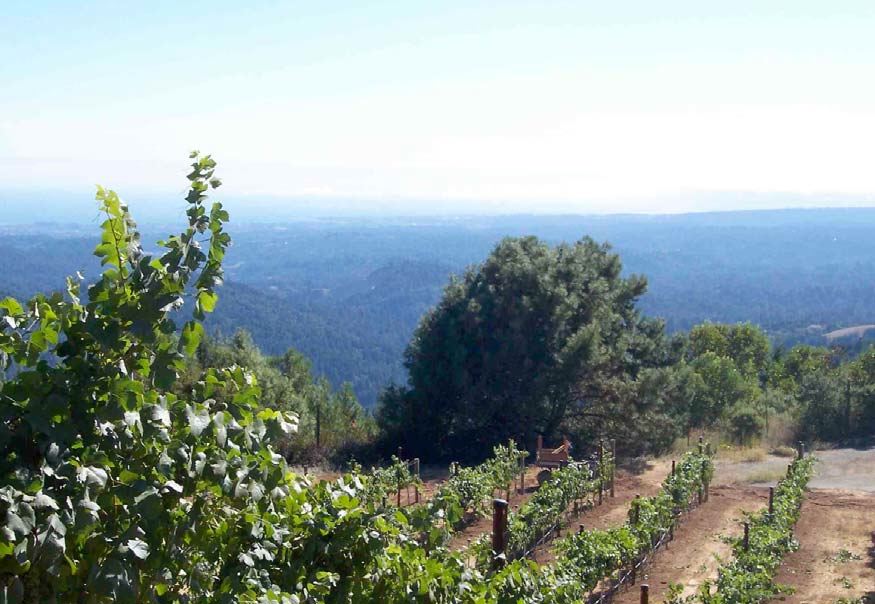 The history of winegrowing in the Santa Cruz Mountains goes back to at least the early 1860s. Loggers and timber men had come to the Santa Cruz Mountains after the Gold Rush, clearing the land and making it suitable for planting a variety of crops. Tree fruits and grapes were found to thrive on the mountain slopes. George and John Jarvis bought 160 acres at $4.69 per acre in the Vine Hill region of Santa Cruz County in 1863 and planted grapes. The Jarvis Brothers Vineyard consisted of 2,000 acres by 1867. The name Vine Hill, as reported in the Santa Cruz Sentinel in 1867, came from the locality that included 2,000 acres of land, situated on the headwaters of Branciforte Creek, and owned by a dozen persons, most of whom all had vineyards. By the 1870s, the Jarvis brothers were making 33,000 gallons of wine and nine of the county’s sixteen winemakers were located at Vine Hill. Early plantings were primarily Mission variety and wine made from these grapes were sold in bulk to San Francisco merchants. By 1878, John Jarvis and others began planting Zinfandel, Semillon, Sauvignon Blanc and Muscadelle. Some of the vine cuttings reportedly came from Chateau Y’quem. Santa Cruz County vineyards quickly assumed a reputation for producing premium quality wines and the region was held in high regard throughout California. Vineyard acreage in the Santa Cruz Mountains increased markedly during the 1880s and by the end of the decade, there were 38, mostly small wineries. The largest winery was William Coope’s Ben Lomond Wine Company, on Highway 9, north of Felton, which produced 40,000 gallons annually. The wines of the Ben Lomond Wine Company were declared to be the equal of any made in Europe by the Royal German Viticultural Commission. The region’s isolated location largely shielded it from phylloxera, but a devastating fire in 1899 destroyed many vineyards and wineries. By 1905, there were 1,600 planted acres, with vineyards concentrated in the Felton, Bonny Doon, Vine Hill, Ben Lomond and Boulder Creek areas on the western side of the Santa Cruz Mountains. After the repeal of Prohibition, many Italians opened wineries and one, Bargetto, is still in production and is Santa Cruz’s oldest. In Santa Clara County on the eastern side of the Santa Cruz Mountains, altar wine was being made by about 1800. By 1852 the first vines had been planted by Charles LeFranc in what became known as the Almadén Vineyard (the name Almadén came from a famous quicksilver mine nearby). He imported several grape varieties and was the first in the area to grow vines grafted onto phylloxera-resistant rootstock. By 1860 there were at least another six producers including Pierre Sansevaine, Antoine Delmas and Louis Pellier. They shipped wine by wagon to the former port of Alviso and from there to San Francisco by boat. At the time Santa Clara County shared the spotlight with Sonoma County as being the best source for San Francisco’s wines. Leland Stanford was a noted winegrower as well, with 350 acres near Mission San Jose and subsequently 158 acres in the Menlo Park area of San Mateo County. Agoston Haraszthy planted vineyards between 1853 and 1856 at Crystal Springs Reservoir in San Mateo County but the chilly climate eventually drove him to Sonoma County. In 1878, Paul Masson, the son-in-law of Charles LeFranc, arrived in San Jose from Burgundy, developed a vineyard with cuttings from Louis Latour, and started the Paul Masson Champagne Company winery adjacent Mount Eden. Martin Ray, whose nickname was “Rusty,” grew up in the foothills below Mount Eden and became a protege of Paul Masson. Masson was able to survive during Prohibition by obtaining a license for the production of “medicinal champagne.” After Prohibition ended, Martin Ray purchased the Paul Masson Champagne Company from Masson and began his career as a winemaker. In 1943, he sold the Paul Masson La Cresta Vineyard to the Seagrams Company and shortly thereafter, moved up the hill and planted his first vineyard at Mount Eden to Pinot Noir and Chardonnay using cuttings from the La Cresta Vineyard. Cabernet Sauvignon was later added in the 1950s. He called his estate “Martin Ray” and it was the first boutique winery model and the first to produce a 100% Pinot Noir varietal table wine in California. Ray made Pinot Noir throughout the 1950s and 1960s. Martin Ray’s years on Mount Eden are recorded in a book penned by his widow, Eleanor Ray, titled Vineyards in the Sky. A memorable quote from Ray is noted in the book, “A mountain vineyard is the most beautiful sight on earth.” Ray eventually lost ownership of his property to his partners and 1970 was the last vintage he made from the Martin Ray vineyards. The new partners renamed the mountain estate “Mount Eden Vineyards,” and produced the first vintage of Mount Eden Vineyards Pinot Noir in 1972 from 29 year-old vines. Over the years, there were a succession of capable winemakers at Mount Eden Vineyards including Richard Graff, Peter Graff, Merry Edwards, Bill Anderson and Fred Peterson. The current owner and winemaker is Jeffrey Patterson. Pictured below is a bottle of Martin Ray Pinot Noir in my collection which is unopened. It is not vintage dated. I drank a couple other bottles of undated Martin Ray Pinot Noir including one packaged in a champagne bottle 15 years ago and remember them as quite drinkable but not particularly impressive.
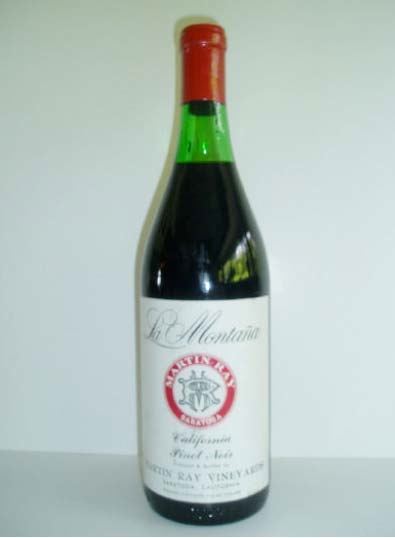 Martin Ray inspired Dr. David Bruce to take winemaking seriously. Although he was raised in a teetotaler family, Bruce developed a serious interest in wine while a medical student. After completing his residency in dermatology, he bought 40 acres of land above the fog line in the Santa Cruz Mountains and planted a vineyard by hand. By 1964, Bruce had bonded his David Bruce Winery in the Santa Cruz Mountains and made his first commercial Pinot Noir in 1966. His initial efforts were fraught with hits and misses, but his combination of passion and scientific curiosity prevailed and he eventually crafted remarkable Pinot Noirs from the Santa Cruz Mountains. The Santa Cruz Mountains AVA was federally approved in 1981 and was one of the first American viticultural areas to be defined by geophysical, altitudinal and climatic factors. The appellation runs the length of the rugged Santa Cruz Mountain range from Half Moon Bay in the north to Mount Madonna north of Gilroy in the south and is sandwiched between two major bodies of water that produce fog events and affect the growing climate. Monterey Bay and the Pacific Ocean lie to the west and San Francisco Bay is to the east. The eastern and western boundaries are defined by elevation, including mountainous land above 400 feet on the western side and 800 feet on the eastern side. The squiggly outline of the AVA reflects the fog line that surrounds the mountains (refer to the Santa Cruz Mountains Winegrower’s Association map on page 5). The Santa Cruz Mountains AVA is not officially part of the Central Coast AVA. This large appellation has approximately 480,000 acres (60 miles as the crow flies) incorporating parts of three counties: Santa Cruz County to the west, Santa Clara County to the east and San Mateo County to the north. Only about 1,500 acres of the appellation are planted to less than 200 vineyards, most of which are less than 5 acres in size and located on moderately steep hillsides above the fog line. The largest commercial vineyards are between 40 and 60 acres. Of the vineyard plantings, 600+ acres are now planted to Pinot Noir with the remainder to Chardonnay, Cabernet Sauvignon (on the warmer eastern slopes) and smaller amounts of various other varieties. Of the 75 Pinot Noir vineyards, most are located on ridge tops along Skyline Road and south above Summit Road, as well as on the western coastal side of the mountain range facing Monterey Bay and even further south into Corralitos. Most of these areas are in the cool Region I climatic zone ideal for growing Pinot Noir. There are 70+ wineries in the Santa Cruz Mountains appellation, at least two-thirds of which produce Pinot Noir from grapes grown within the appellation or from grapes sourced from outside the appellation. It is the Santa Cruz Mountain fruit that produces the distinctive and most prized mountain-grown Pinot Noir.
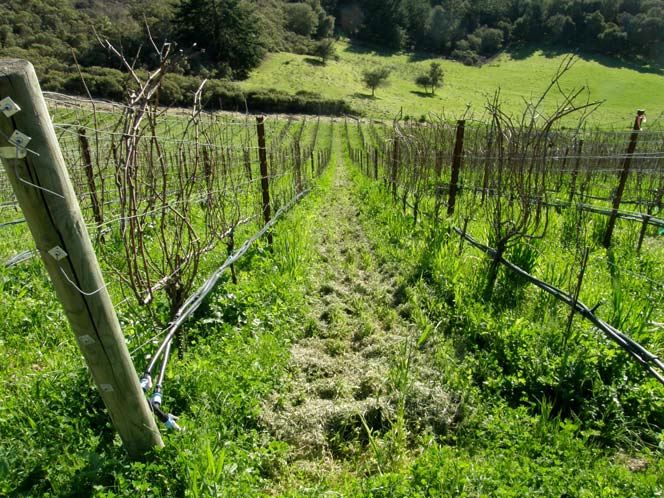 The quality of Pinot Noir grapes grown in the Santa Cruz Mountains is unquestioned, but the challenges of growing grapes in this mountainous terrain with its harsh climate are numerous. The vineyard sites are remote, steep and rugged, land is expensive, irrigation water is limited or nonexistent, and pests such as birds, deer and gophers are ever present. Skilled vineyard labor is hard to find, top soil is poor and limited in many sites and yields are typically less than two tons-per-acre, making Pinot Noir production economically a challenge. On top of all of this, the antagonistic and bureaucratic populace make things difficult for the wineries. Despite these obstacles, a hardy brotherhood of dedicated and passionate winegrowers empowered with mountain spirit have persisted.
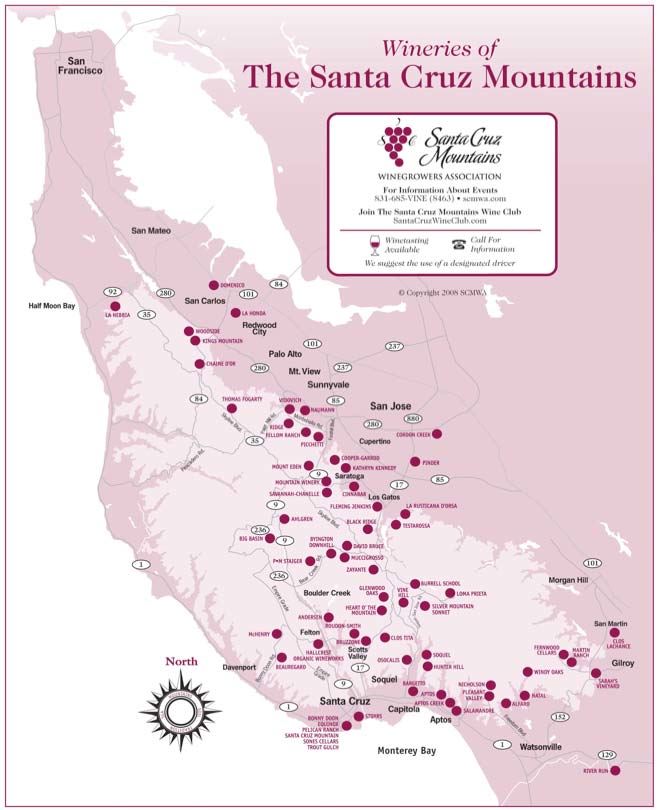 The Santa Cruz Mountains is a marriage of fog and sun. The grapes ripen in cool temperatures as the daily fog rolls in, with the sun burning the fog off as the day progresses. The growing season is extended, creating grapes with complex and intense flavors and lively acidity. Santa Cruz Mountains wines are characterized by an earthy, mineral quality and a complexity and balanced acidity that helps them age well. The Pinot Noirs are pure in expression with lovely aromatics, luscious fruit flavors, soft tannins, all packaged in a light to medium bodied wine so juicy you can ‘nibble’ at it. In the 1980s, the Pinot Noirs had a reputation as rustic, chunky and tannic. Today, the Pinot Noirs are modern in style with very commendable value-to-price ratios. I am an advocate of the appeal of the Pinot Noirs from these mountains and firmly believe the wines are worth the serious interest of every pinotphile. In recent years, much of the advancements in the quality of Santa Cruz Mountains Pinot Noir has come from the widespread use of modern viticultural knowhow. A number of experienced vineyard consultants, including Prudy Foxx and Greg Stokes, are actively assisting clients in choosing appropriate sites, planting the proper clones matched to the sites, and overseeing proper trellising, canopy management, and sustainable vineyard practices. As a result, the quality is almost universally excellent and improving every year. The Santa Cruz Mountains Pinot Noirs are perfectly summarized in this quote from the book, Sideways, “Its a hard grape to grow... it’s thin-skinned, temperamental, ripens early... it’s not a survivor like Cabernet, which can grow anywhere and thrive even when it’s neglected. No, Pinot needs constant care and attention... it can only grow in these really specific, little, tucked-away corners of the world. Only the most patient and nurturing of growers can do it, really. Only somebody who really takes the time to understand Pinot’s potential can then coax it into its fullest expression.” Recently, six subregions have been identified in the Santa Cruz Mountains all defined by their unique microclimates. In an attempt to understand the diverse Santa Cruz Mountains appellation, a group of viticultural and wine experts in association with the online web portal Appellation America (www.appellationamerica.com) gathered to taste 55 Pinot Noirs from the Santa Cruz Mountains appellation in late 2008. In submitting the Pinot Noirs for tasting, the wines were organized into five different subregions and the tasters were able to confirm distinct general characteristics in the wines grown in each of the five subregions. A sixth subregion of the Santa Cruz Mountains, Ben Lomond, which is its own AVA, was not included in the tastings. The subregions are: Skyline, Saratoga/Los Gatos, Summit Road, Los Ranchos/the Coastal Hills and Corralitos/Pleasant Valley. Despite differences in viticulture, clones, and winemaking styles, there is a strong suggestion that rather distinct subregional characteristics can be identified. I asked Mary Lindsay, the President of the Viticultural Association of the Santa Cruz Mountains (VASCM), to roughly outline the five subregions. Keep in mind, the exact boundaries of these subregions have not been strictly identified and the map below is intended at this time to be a general guide. Only the most dedicated Pinot geek will be able to get a handle on the emerging subregion concept, but I believe this idea will evolve in time with increasing clarity and create very useful information that Pinot lovers can use to navigate and understand this vast region. It is prudent to remember that a number of wineries access fruit from subregions outside the subregion where the winery is located.
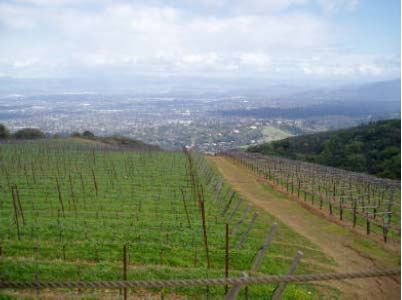
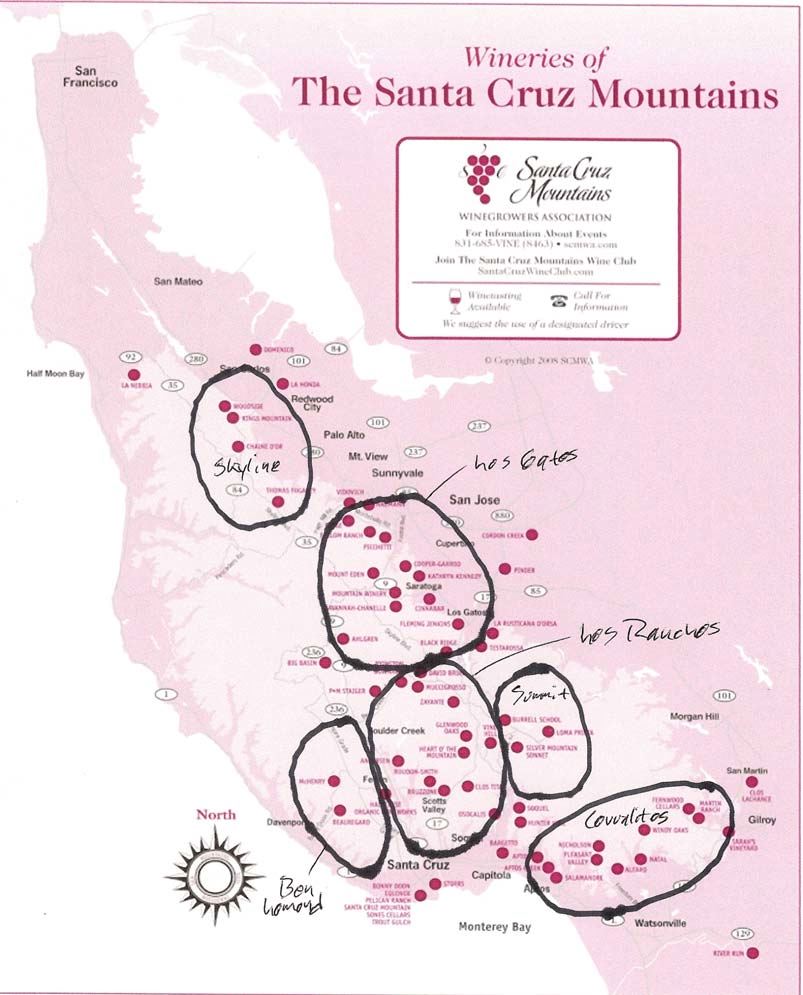 Skyline This is the northernmost end of the appellation in the Woodside area along Highway 35. The subregion includes vineyards along the ridge at about 2,100 feet, as well as vineyards downslope closer to San Francisco Bay. This is the coolest part of the AVA. These vineyards can experience dramatic temperature swings with an almost daily evening maritime fog during the summer that brings chilly coastal air inland to cool the warm afternoons. Flavor profile of Pinot Noir: Pronounced acidity and minerality and bright, lively fruit particularly red berries, cranberry and guava with cocoa, allspice and tobacco. Pinot Wineries: Clos de La Tech, Kings Mountain Winery, Rhys Vineyards, Thomas Fogarty Winery & Vineyards, Varner Wines (and Neely), Woodside Vineyards.
 Saratoga/Los Gatos The vineyards are located on hilltops above Saratoga and near the Lexington Reservoir in Los Gatos whose mists cool the vineyards. Most of these vineyards are on the eastern side of the mountains and enjoy a long cool growing season with moderate temperatures. This subregion is warmer with less fog than Skyline. Growing days are long and even. Flavor profile of Pinot Noir: Graceful wines of great depth. Rounder, softer and less angular than wines from Skyline. Powerful and complex with dark cherry and raspberry aromas and flavors laced with balsam, sage, juniper, wet stone and ‘mountain spice.’ Packed with mineral energy and distinct acidity. Pinot Wineries: Ahlgren, Black Ridge Vineyards, Cinnabar, Mount Eden Vineyards, Mountain Winery, Savannah-Chanelle Vineyards.
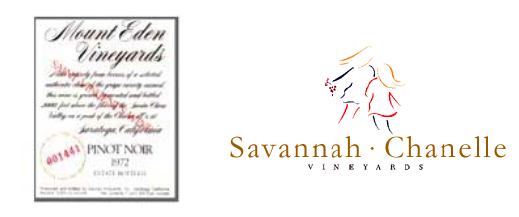 Summit Road This subregion extends along the ridge tops south of Highway 17 above Soquel that follow Summit Road high above Monterey Bay and includes the highest Pinot Noir vineyards in the appellation (up to 2,600 feet above sea level). Many of the vineyards have all day sun and are surrounded by scrub oak, pines and high chaparral. During the growing season, the vineyards are cooled by the soft breezes that flow up the mountains from the coastal fog that blankets Monterey Bay. Irrigation and canopy management is important to protect the fruit from the intense sunshine. Some vineyards are certified organic. Flavor profile of Pinot Noir: The region’s most uncompromising, mineral-intense wines. Very bold, rich and full-bodied, with generous tannins, and fruit characterized by cherry, raspberry and pomegranate. They can be floral, smoky and show dark chocolate highlights. Pinot Wineries: Burrell School Vineyards, David Bruce Winery, Loma Prieta Winery, Muns Vineyard, Silver Mountain Vineyards, Sonnet Wine Cellars.
 Los Ranchos/Coastal Hills This area cascades along the Highway 17 corridor, below the Summit area, moving toward Santa Cruz and the coast and encompasses Rancho San Augustine on the west (Scotts Valley) and Rancho Shoquel Augmentation on the east (from Santa Clara County to Soquel). Originally planted extensively to vines in the mid-1800s, much of this area was designated as Vine Hill in 1867. The mountaintop vineyards range in elevation from 800 to 1,300 feet with southern exposure and are cooled by their proximity to Monterey Bay. The topsoils are well draining and range from one inch to three feet of sand, sandy loam, loam and clay loam on top of weathered bedrock. The vineyards are surrounded on the lower elevations by chaparral including madrone, manzanita and oaks. Flavor profile of Pinot Noir: Less acidity than Skyline and Saratoga groups. Big, complex and multilayered with aromas and flavors of olallieberries, cranberries, chocolate, caramel and coriander. Tannins are firm, acids are balanced and minerality is prominent. Bold wines that are generally fruit forward and sweeter. Pinot Wineries: Bargetto Winery. Clos Tita, Hallcrest Vineyards, Heart O’ the Mountain, Hunter Hill Vineyard & Winery, Muccogrosso Vineyards, Roudon-Smith Winery, Soquel Vineyards, Wines of Vine Hill
 Corralitos/Pleasant Valley This is the southernmost subregion near Watsonville. These vineyards are at lower elevations (about 400 to 800 feet) along the coast. Early morning fog may blanket these vineyards during the summer. Afternoons are typically warm with cool nights. The diurnal temperature variation is rather dramatic creating intense, concentrated flavors. Ripening is slowed and this area has one of the longest growing seasons in California. Soils are sedimentary (sand, clay, silt and loam). Flavor profile of Pinot Noir: Brilliant color with aromas and flavors of hibiscus, bay, baking spice, strawberry, cranberry, blueberry, nectarine and root beer. The acidity is pronounced but inviting and there is well-integrated minerality. The wines are graceful and aristocratic. Pinot Wineries: Alfaro Family Vineyards, Aptos Creek, Nicholson Vineyards, Pleasant Valley Vineyards, Sarah’s Vineyard, Salamandre Cellars, Storrs Winery, Windy Oaks Estate Vineyard & Winery.
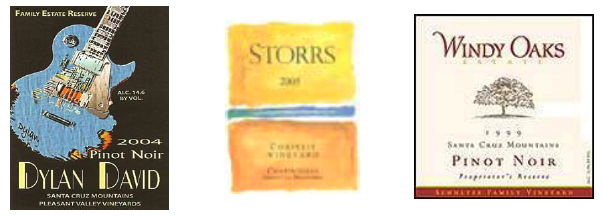 Ben Lomond This is the only sub-appellation in the Santa Cruz Mountains. Ben Lomond Mountain is about 10 miles northwest of Santa Cruz on a ridge overlooking the Pacific Ocean. The vineyards are at 1,300 to 1,800 feet elevation. Most of the roughly 90 acres of vineyards here are owned and farmed by Beauregard Vineyards with about 40 acres planted to Pinot Noir. A few acres belong to McHenry. Soil composition is mostly sand and sandy loam. The vineyards are adjacent redwood forests and mixed chaparral. Fog greets the mornings all summer long. Average rainfall is over 30 inches. Flavor profile of Pinot Noir: Complex strawberry and rhubarb aromas laced with clove, juniper, mustard and truffle. Spicy flavors of plum and berries. Moderate but masculine tannins and packed with mineral energy. Generally powerful and complex. Pinot Wineries: Beauregard Vineyards. McHenry Vineyard.
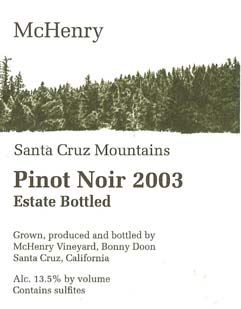 Wineries in Santa Cruz: Bonny Doon, Equinox, Pelican Ranch Winery, Santa Cruz Mountain, Trout Gulch Vineyards. In November 2008, Bonny Doon Winery moved its tasting room to the Surf City Vintners area in Santa Cruz and Beauregard Vineyards moved into the old Bonny Doon tasting room and property at 10 Pine Flat Road in Bonny Doon. Wine remains the only product commercially available in Bonny Doon. The photo below shows the home of Santa Cruz Mountain Vineyards and Bonny Doon at Surf City Vintners.
Tasting Santa Cruz Pinot Noirz

Thomas Fogarty Winery & Vineyards Dr. Thomas Fogarty bought 325 acres in the early 1970s on Skyline Drive in Woodside. He was the first to plant grapes on the region’s Skyline Ridge in 1978. Winemaker Michael Martella met Fogarty in 1980 while Martella was working at a large winemaking facility in the Central Valley of California. The two became friends, Martella signed on as the winemaker, helped design the winery, and has been there ever since. Two vineyards were planted to Pinot Noir in 1981 using heritage selection cuttings from David Bruce, probably Martini selection. There are now 25 acres of ridge top micro-vineyards including Windy Hill (2.5 acres of Pinot Noir, 1,970 feet above sea level), Razorback (2 acres of Pinot Noir at 1,400 feet), and Rapley Trail (5.5 acres of Pinot Noir at 1,650 feet). Initially the Fogarty style of Pinot Noir was full-bodied, darkly colored, with intense black cherry flavors, considerable structure and tannin and often were clumsy on release. Over the years the amount of extraction has been reduced and improved balance of tannin and fruit has been achieved. Currently, the Pinot Noirs are fermented in small lots, ranging from .5 to 3 tons. 25% to 30% whole clusters are used and fermentation is conducted without the addition of yeast. A 3 to 7 day cold soak is followed by a maceration period lasting 14 to 21 days including the cold soak. The press fraction is separated at the press. The Pinot Noirs are aged in 3 year air-dried French Oak from the forests of Bertranges, Allier and Troncais. Historically the winery has produced either a Santa Cruz Mountains Pinot Noir (with purchased fruit added to estate fruit) or an estate Pinot Noir. In special vintages, the micro-vineyards have been separated out. In addition, specific block-designated Rapley Trail Pinot Noirs are sometimes released. Since 2005, Martella has sourced Dijon clones and blended them into his estate wines and both Dijon 115 and 667 clone have replaced a portion of the estate vineyard previously planted to Merlot. The winery’s tasting room is open Wednesday thru Sunday from 11:00 AM to 5:00 PM (small tasting fee). The address is 19501 Skyline Blvd., Woodside. 650-851-6777. The website is www.fogartywinery.com. At the recent World of Pinot Noir I tasted two 2007 Thomas Fogarty Pinot Noirs presented by assistant winemaker Nathan Kandlar.

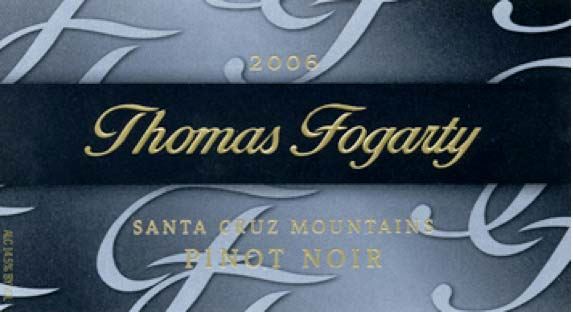 2007 Thomas Fogarty Winery & Vineyards Rapley Trail Estate “M” Block Santa Cruz Mountains Pinot Noir 13.7% alc., 75 cases, $68. The backbone of past Estate Reserve bottlings. Since 2002, two unique blocks of Rapley Trail Vineyard, B and M, although continuous, are distinct and bottled separately. · Gorgeous aromas of black raspberries, baking spice and violets. There is a plush core of berry fruit with a ridiculously long finish. Plenty of ripe, fine tannins create the framework for a long life ahead yet the whole package is approachable now. A stunning wine.
2007 Thomas Fogarty Winery & Vineyards Windy Hill Vineyard Santa Cruz Mountains Pinot Noir 14.1% alc., 100 cases, $45. This vineyard is perched on the top of the Fogarty Estate. Buffeted by wind, drenched in fog and with vines grown in very shallow soils. Aged 18 months in 66% new French oak. · A ripe tasting wine with a touch of raisin accenting the dark red fruits. Notable oak and underlying loamy earth and forest floor with prominent tannins that need to be shed. Still juvenile.
Clos De La Tech This winery is owned by Dr. T.J. Rodgers, the CEO of Cypress Semiconductor. The word “clos” is derived from the Burgundian term for an enclosed vineyard and the “tech” part of the name is a reference to the owner’s technology background. Silicon chips are applied to the neck of every Clos de la Tech bottle. The 2002 vintage reviewed below has two real silicon memory chips with 1.02 billion transistors on each bottle (at $0.0000001 per transistor, that’s $102 in value, making the wine free!). Clos de la Tech was founded in 1994 and consists of three vineyards planted in the Santa Cruz Mountains range: Domaine Docteur Rodgers, Domaine Valeta (named after Rodgers’ domestic partner, Valeta Massey) and Domaine Lois Louise. Farming is definitely high-tech, but winemaking is very traditional in the Burgundian mold. A new winery facility at Domaine Lois Louise Vineyard will eventually process up to 13,000 cases of wine. The small production is sold solely through a mailing list at www.closdelatech.com.
2002 Clos de La Tech San Francisco Bay Pinot Noir 13.0% alc., 1,360 btls, $101. From a 1-acre closeplanted hilltop vineyard planted to Dijon clones on French rootstocks. This Domaine du Docteur Rodgers Vineyard is not strictly in the Santa Cruz Mountains appellation, thus the San Francisco Bay designation on the label. Whole cluster, foot crushed, natural yeast, unfiltered, aged in Francois Freres oak barrels. · The nose combines medicinal notes with spearmint and mint. Also minty on the palate and a touch green. The tannins overwhelm the light fruit.

Rhys Vineyards Refer to Volume 7, Issue 13 of the PinotFile.
Mount Eden Vineyards A winding unpaved eight mile road leads up to Mount Eden Vineyards, perched at 2,000 feet at the top of a mountain like a viticultural island. It has been likened to a “ship at sea” in that it is completely exposed to winds and storms on all sides. The timber house was built in the early 1950s by Martin Ray and now is the home of long time owner and winemaker Jeffrey Patterson. The entrance to the old winery can be seen in the photo below just to the right of the timber on the ground.
 Martin Ray realized that premium wine could only be grown in the soils of the mountains. At the time Ray started Mount Eden, the valley below was all farms and farmhouses and the soil there was too thick and alluvial to successfully grow wine grapes. The mountains, however, provided formidable obstacles. There were no wells at the time so Ray had to get the vineyard established using rain water and water from springs. Annual rainfall at Mount Eden in a quality year is 30 to 35 inches, enough to currently dry farm. All work at Mount Eden had to be performed by hand as no farm equipment could operate in the steep vineyards. The original vines were planted in a 10’ x 10’ arrangement and the vines were trained vertically. Ray was an innovator but not a great winemaker and several of his wines were noncommercial. He limited his production, estate bottled his wines, used small oak cooperage, bottled the wines in heavy glass bottles and even sparkling wine bottles, and sold his wines at very high prices for the time. Patterson notes that Mount Eden’s lineage of estate bottled Chardonnay and Pinot Noir is the longest in California. He started a stepwise replanting of the vineyard at Mount Eden in 1984 but kept one acre of the original vines as a “mother vineyard.” The Mount Eden clone (UCD 37) identified by Merry Edwards when she was the winemaker here is still used in a number of Pinot Noir vineyards in California. The six other acres of Pinot Noir were replanted to Winery Lake, Mount Eden, Swan and Calera selections, and Dijon clones 115, 667, 777 and 828. The Estate Pinot Noir is a mosaic of all of these clones. Today, the estate totals 40 acres of vineyards (20 acres of Chardonnay, 7 acres of Pinot Noir and 13 acres of Cabernet Sauvignon with some Merlot and Cabernet Franc). The Pinot Noir vineyard is adjacent the house and winery and is pictured in the photo below. Patterson describes his vista as “a ying-yang view.” To the west is the Santa Clara Valley (left) and to the east are the mountains (right). The estate is 15 miles from the Pacific Ocean as the crow flies.
  The Mount Eden Estate Pinot Noir is an Old World style. The cool location of the vineyard, old clones and winemaking combine to produce a wine that is more austere than opulent. The wine departs from the typical California style by its higher tannins and acidity (the same holds true for the Mount Eden Estate Chardonnay and Cabernet Sauvignon). Many tasters have difficulty picking out a Mount Eden Estate Pinot Noir from a flight of French Burgundies. Yields are low, varying from one-half ton to two tons per acre. Grapes are picked at moderate ripeness and the wines are not fermented or aged a particularly long time. Natural yeasts are used. Aging is in 75% new and 25% one year-old French Burgundy barrels. The ideal drinking window for Mount Eden Estate Pinot Noir is 7 to 10 years. The photo below shows first leaf from an old Pinot Noir vine at Mount Eden.
 I have to admit to an admiration for Jeffrey Patterson because of his ability to go it alone. Working at an isolated vineyard and winery, he has his own clearly defined vision, yet he is not closed to what others are doing. His story is not well publicized and he doesn’t trumpet his own horn enough in my opinion. I like him, respect his panache and his ability to craft highly unique wines which not only clearly reflect Santa Cruz Mountains terroir, but offer age ability that goes beyond what we have come to expect from California Pinot Noir. If you are a wine connoisseur and were to ask me to list the 10 California Pinot Noirs to try before you die, Mount Eden Estate Pinot Noir would have a prominent listing in that small group. Mount Eden wines are available for tasting in San Francisco at the Press Club (www.pressclubsf.com). One public tour of Mount Eden is available each weekday afternoon by reservation only (up to six people, no tasting). Phone 408-867-5832 extension 10. The website is www.mounteden.com.
 2006 Mount Eden Vineyards Saratoga Cuvée Santa Cruz Mountains Pinot Noir 13.9% alc., $30. Grapes for this blend come from three vineyards in the Santa Cruz Mountains: Woodside, Mount Eden and Santa Cruz Mountain. · Light ruby color. Appealing aromas of cherries, strawberries, herbs and roasted nuts. On the palate the wine is reserved with flavors focused on cherry enhanced by herbs and spice. The tannins are fine, the acidity is lively and the finish is tangy and slightly citric. A pleasant, simple wine for early consumption.
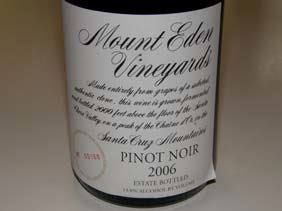 2006 Mount Eden Vineyards Estate Santa Cruz Mountains Pinot Noir 13.8% alc., 870 cases, $45. Yields were 4 tons per acre. · Redder-toned color. Very sexy aromas of wild berries, cherries, root beer, herbs and a touch of spice. There is a rainbow of middleweight red fruits touched by dirt, minerals and herbs. The wine doesn’t assault the palate (no “bombs bursting in the air”) but seduces with restraint, finesse and appropriate refreshing acidity. It was fine the next day from a re-corked previously opened bottle, showing more toast, leather and oak and a satiny texture. This wine is the best of both worlds: it can be drunk and enjoyed now, especially with food, or it can be aged for up to 10 years. It is a distinctive Pinot Noir that will not appeal to the fruit hedonist but will speak to those who truly understand wine and terroir.
2007 Mount Eden Vineyards Estate Santa Cruz Mountains Pinot Noir Tasted briefly at the 2009 World of Pinot Noir. · While the 2006 vintage Estate Pinot Noir is quite showy for a Mount Eden wine, the 2007 vintage is more in step with the usual program. Rather austere raspberry fruit with noticeable oak on the nose and grippy tannins on the finish. Plenty to like here, but this wine is a Lolita.
Black Ridge Vineyards Jim and Cheryl Landes and Fred Faltersack bought the Black Ridge property in the late 1990s. The land had been planted with grapes as far back as the late 1800s during the California wine boom. During Prohibition, the property was replanted with prune trees and later converted into a Christmas tree farm. The infamous San Andreas Fault runs through the upper vineyard and the winery’s Bordeaux-style blend is appropriately named San Andreas Red. Some have theorized that fault lines influence nutrient transport and soil aeration for the good. The winery produces a superb Viognier, a rarity from the Santa Cruz Mountains, and a Pinot Noir to compliment the Bordeaux blend. The Santa Cruz Mountains is one of the few regions in California where Pinot Noir and Bordeaux varieties thrive almost side by side. The winemaker is Bill Brousseau who crafts the wines at Testarossa Vineyards in Los Gatos and the viticulturist is Reuben Balderas. The Black Ridge property is located 3.5 miles outside downtown Los Gatos off southbound Highway 17. Tours and tasting by are available by appointment by contacting Ashley DeBois at 408-399-6396. The website is www.blackridgevineyards.com.
 2006 Black Ridge Vineyards Santa Cruz Mountains Pinot Noir 14.7% alc., $41. · Delicate aromas of cherries, oak, herbs and a hint of alcohol. Plenty of cherry and berry flavors to satisfy with a vein of oak and herbs running through. Admirable elegance with nicely balanced t n’ a. My wife raved about this wine.
Mountain Winery The historic Paul Masson Wine Estate has been resurrected as The Mountain Winery
and has resumed wine production. The Mountain Winery is situated high above
Silicon Valley in Saratoga at the site of Paul Masson’s vineyard and winery, known
as La Cresta. No wine had been produced at the property since the 1950s and the
vineyard had not been seriously farmed since the 1940s. In 1998, four partners
bought the 580 acre property and renovated the buildings and surrounding
landscape to serve as an event and music venue. Replanting of the vineyard began
in 2004. In 2006, both a Mountain Winery Estate Pinot Noir and Chardonnay were
produced (about 300 cases total). Value-priced Mountain Winery wine is also
produced under The Mountain Winery label from purchased bulk wine, intended
primarily to be served at events on the property. Dave House, one of the winery’s
partners, overlooks the winery operations and Jeffrey Patterson, the winemaker at
Mount Eden, crafts the wines at Mount Eden. Eventually, winemaking will be
carried out inside caves to be dug on the property. The tasting room located at 14831
Pierce Road in Saratoga is open Thursday thru Sunday (tasting fee). The estate wines are only available at the
tasting room or online at www.mountainwinery.com. The website has a listing of concerts and wine tasting
events. 408-741-2822.
Burrell School Vineyards & Winery Dave and Anne Moulton bought the 1890 Burrell School one room schoolhouse on Summit Road along with 20 acres in 1973. The property is located 1,600 feet above Monterey Bay. The Moultons had to replant their entire vineyard after the 1898 Loma Prieta earthquake (their property sits in proximity to the San Andreas Fault). Dave worked as an engineer for years, making wine as a hobby until 1992 when he bonded the Burrell School Winery. A winery facility was built two years later. The Moultons restored the schoolhouse and used it as a tasting room for several years, but it became their living room with the opening of an adjacent tasting room. The school house theme has been carried out throughout the tasting room and the wine labels which display the phrase, “I promise to sip my wine.” Dave crafts a number of varieties but he has a soft spot in his heart for Pinot Noir. The Burrell School Pinot Noirs are crafted from both the Estate Vineyard and nearby Veranda Vineyard. The wines are aged 18 months in 50% to 70% new French oak and spend 1 year in bottle before release. The tasting room is very inviting and the outside deck is the perfect spot to sample some Pinot Noir and take in the vista. Call ahead for tasting room hours or to taste by appointment. The address is 24060 Summit Road, Los Gatos. 408-353-6290. The website is www.burrellschool.com. Dave has been a driving force in the annual Pinot Paradise event. If you visit, ask to see his tractor collection. I tasted three Burrell School Pinot Noirs while visiting the Santa Cruz Mountains in early February 2009 and they are reviewed here.

2005 Burrell School Principal’s Choice Estate Reserve Santa Cruz Mountains Pinot Noir 14.4% alc., 720 cases, $44. Pommard and Dijon clones. · Intense confected fruit on the nose starring black cherries. Robust black cherry and wild blackberry flavors with some forest floor on a silky platform. Plenty of lively acidity to complement the fruit.
2006 Burrell School Principal’s Choice Estate Reserve Santa Cruz Mountains Pinot Noir 14.8% alc., 725 cases. · This wine is still subdued and brooding with grippy acidity on the finish. There is plenty of brambly black cherry and berry fruit lurking accented by dark chocolate flavors. At present, the acidity is in the forefront and this wine needs time to fully integrate.
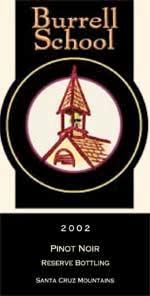 2005 Burrell School Veranda Vineyard Reserve Santa Cruz Mountains Pinot Noir 14.4% alc., 336 cases, $35, This vineyard is near Mount Madonna, 800 feet above Monterey Bay. Pommard and Dijon clones. · Moderately light reddish-purple color. Alluring scents of cherries, strawberries, rhubarb and roses. Brambly dark red Pinot fruits are very soft in the mouth accompanied by gossamer tannins. A silky and sensual wine of great charm. Drinking now at its apogee.
David Bruce Winery David Bruce is one of California’s “Pinot Pioneers.” A dermatologist by training, Bruce started his winemaking career in Oregon making wine from Concord grapes. His early interest and training in Pinot Noir winemaking came from the legendary Martin Ray. David Bruce Winery was founded in 1964 and the first commercial release of Pinot Noir was in 1966. Bruce was one of the first California winemakers to use whole berry fermentation and to advocate foot crushing of the cap, extensive skin contact and small barrel French oak fermentation. He was also one of the first to extoll the virtues of wine drinking years before the 1991 60 Minutes television program on the French Paradox. Bruce published a booklet titled, “Ten Little Known Medical Facts about Wine that You Should Know.” He was one of the first doctors to publicize that resveratrol in red wine increases good cholesterol and reduces bad cholesterol. He recommended that hospitals have wine on the patient menus and encouraged a glass of wine for the elderly to improve their appetite and raise their self-esteem. He pointed out that sulfites in wine are a non-issue for 99.9% of people since true allergies to wine are extremely rare and then only to egg white used as a fining agent. He also defused the hysteria about elevated lead levels in wine. Currently, David Bruce is still visible in his vineyard and winery and attended this year’s World of Pinot Noir. He is organizing his memoirs for inclusion in a book about his extraordinary career. Beside the 16-acre Estate Vineyard (9 acres planted to Pinot Noir) located at 2,200 feet in the Santa Cruz Mountains, the winery sources grapes from over thirty growers in Northern and Central California representing ten different appellations. The Estate Pinot Noir is the signature wine in the David Bruce lineup but the appellation and vineyard-designated Pinot Noirs are consistently fine and are sold on the website at www.davidbrucewinery.com. The tasting room is open from 12:00 to 5:00 daily at 21439 Bear Creek Rd in Los Gatos. 408-354-4214. The winemaker since 2004 is Mitri Faravashi. Total production is now 60,000 cases annually including multiple wine varietals. Astonishingly, there is not one picture of David Bruce on his website and only one on Google Images. I regret I didn’t snap a picture at the recent World of Pinot Noir.
 2000 David Bruce Commemorative Santa Cruz Mountains Pinot Noir 14.2% alc., 70 cases, $50. This wine was produced to commemorate the 70th birthday of David Bruce. The label features the work of San Francisco artist, Henry Jackson, who created an original painting, ‘Gather,’ for the label. Packaged in a very special tall and extremely heavy bottle with a wax seal. The wine was decanted. · Intense ruby color. Brooding aromas of dark berry jam, plum, barnyard, forest floor, oak and minerals. A substantial core of dark berry fruit is accented by hints of clove and citric peel. A big-boned, chewy and fruit-driven wine that lacks focus. The balance is admirable and the texture is quite smooth, but the wine just doesn’t deliver much nuance or excitement. It is crafted in the Burgundian mold of a Pommard. Pair with hearty food.
Loma Prieta Winery Paul and Amy Kemp are newcomers to the Santa Cruz Mountains wine scene but their Pinot Noirs have made quite a splash. In 1970, Paul acquired property high in the mountains with sweeping views of the entire Monterey Bay to the west and Mount Loma Prieta to the east. It wasn’t until 2003 that he planted an estate vineyard, built a home on the property, and in 2008 completed a 4,000 square foot Tuscan-styled winery and guest center. The Estate Vineyard, situated at 2,300 feet, is one of the highest in the Santa Cruz Mountains. The Loma Prieta brand was launched in 2003 with a Cabernet Sauvignon from purchased grapes and Pinot Noir followed the next year. Since 2004, the Santa Cruz Mountains bottling has been sourced from the Saveria Family Vineyard in Corralitos which is managed by renowned viticulturist, Prudy Foxx. The 2006 Loma Prieta Saveria Family Vineyard Santa Cruz Mountains Pinot Noir won gold medals in three major competitions: the 2008 California State Fair Commercial Wine Competition, the 2008 San Francisco Chronicle Wine Competition, and the 2008 West Coast Wine Competition. Total production, which includes a Merlot, is quite small and sold primarily through the tasting room and website. Paul manages to juggle the demands of his personal injury law practice with winemaking, and Amy, who is passionate about Pinot Noir as well, oversees all sales and marketing. Call 408-353-4570 for tasting room hours. If you do plan to visit, carefully follow the directions on the website at www.lomaprietawinery.com. The estate is about as far away from the town of Los Gatos as you can get. It is an adventure driving there, but once you arrive, you will receive a warm welcome and a glass of Pinot as you succumb to the magical view.
 The Loma Prieta Winery label is quite striking. The artwork depicts a whimsical magician holding a glass of wine and flying over Mount Loma Prieta with an earthquake fault clearly visible. The artwork was specially commissioned by the Kemps and displays the work of Martin LaBorde from New Orleans, Louisiana. All of LaBorde’s artwork features a little magician named Bodo who lives in a spiritual landscape that is dominated by a deep black space. Several of LaBorde’s original paintings adorn the walls of the Kemps’ home.

2006 Loma Prieta Winery Saveria Vineyard Santa Cruz Mountains Pinot Noir 14.5% alc., 195 cases, $50. · A complex aromatic profile that changes constantly in the glass. Black cherry is a constant but there are fleeting scents of spice, cinnamon candy, sawdust, mocha, vanilla and prune. Flamboyant dark cherry and berry flavors with an earthy underpinning and a touch of oak. Full-bodied and intense, but framed nicely with acidity and moderate fine tannins that become more prominent in the glass over time.
2007 Loma Prieta Winery Estate Santa Cruz Mountains Pinot Noir 14.2% alc., $55. · Attractive aromas of red cherries and subtle toasty oak. Delicious cherry core, bright and juicy, with a hint of oak and caramel. Beautiful balanced with barely detectable fuzzy tannins and a dry and refreshing finish.
2007 Loma Prieta Winery Saveria Vineyard Santa Cruz Mountains Pinot Noir 14.4% alc., $50. · Moderately dark reddish-purple robe. The nose grows and grows in the glass exploding with fresh black cherry pie filling and new oak aromas. The bold fruit is secured by substantial tannins and adequate acidity creating admirable balance. The wine possesses a mouth coating fullness and a finish that would make Hollywood proud. This one deserves an Oscar.
Muns Vineyard Ed Muns and Mary Lindsay are the team behind Muns Vineyard wines. Ed was formerly a technology manager at Hewlett-Packard and Mary was a public relations consultant for technology start ups. Ed found an abandoned vineyard that brushes the sky on the Loma Prieta Ridge above Monterey Bay at 2,600 feet while looking for a high elevation home for his ham radio antennas. Together the pair cleared the land and replanted the 12-acre vineyard to Pinot Noir. It is now the highest Pinot Noir vineyard in the Santa Cruz Mountains. The site enjoys maximum sunlight yet it is exposed to gentle and cooling breezes during the summer from the fog intrusion below. The vineyard is planted to Dijon clones 114, 115, 667 and 777 and is pristinely farmed. The wines since 2005 have been crafted by Tony Craig (Sonnet, Silver Mountain). The grapes are 100% de-stemmed. A few day cold soak is followed by inoculated whole berry fermentation with cap management achieved by pulsed air. Barrel aging is carried out uniquely in 30% to 40% very tight grain new Eastern European oak for 14 to 17 months depending on the vintage. The aim is for oak to be supportive but not assertive. Eastern European barrels add notes of ground spices, such as cumin, clove, white pepper and coriander not seen from French barrels. The lees are stirred to maintain color and fill out the palate. The wines are not racked. The winery dog is a Jack Russell terrier named “Pinot,” who is an accomplished hunter of gophers, lizards and occasionally rattlesnakes. The Muns Vineyard Pinot Noirs (and a dry Rosé) are available through the website at www.munsvineyard.com. 408-515-2663. Mary Lindsay is the President of the Viticultural Association of the Santa Cruz Mountains (www.vascm.com) and is an excellent source for information on the region (408-984-7242). A few of Mary’s beautiful photographs of Muns Vineyard are included here with her permission. The reviewed wines were tasted at Silver Mountain Vineyards in early February 2009 and at the World of Pinot Noir in early March 2009.




2004 Muns Vineyard Santa Cruz Mountains Pinot Noir 13.9% alc., 120 cases, $40. Crafted by Soquel Vineyards. Aged 10 months in 50% new French loose grain French oak. Racked several times. · Spiced red fruits on the nose, primarily strawberry, with oak notes that become more evident with time in the glass. Huge attack of strawberry fruit gloved in oak spice. Supple tannins, grippy acidity and a dry and persistent finish showing a touch of citrus.
2005 Muns Vineyard Santa Cruz Mountains Pinot Noir 13.8% alc., 180 cases, $40. · Intense reddish-violet color. The nose is a bit floral, perfumed with wildflowers, and also revealing a fragrance of cherries and ripe grape fruit trending toward, but not reaching, raisin. A big-boned wine that is plush on the palate with a healthy tannic backbone and plenty of acidity to balance out the structure.
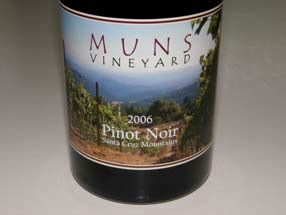 2006 Muns Vineyard Santa Cruz Mountains Pinot Noir 14.5% alc., 380 cases, $40. 17 months in 33% Hungarian oak. · Lighter in color and body than the 2005 vintage, despite the higher alcohol. Darker red fruits including cherries, strawberries and raspberries are featured enlivened by a touch of minerality, savory herbs and oak spice. A hint of alcohol peaks out on the nose. There are moderate ripe fruit tannins that give the wine substance. A pleasurable wine that is easy to drink.
2007 Muns Vineyard Santa Cruz Mountains Pinot Noir 13.9% alc., 380 cases, $40. 17 months in 33% new Hungarian oak. Tasted out of barrel at the winery and from a barrel sample at World of Pinot Noir. · A consistent Muns Vineyard style is beginning to evolve with this wine which shows similarities in structure and character to the 2006 vintage. This wine exhibits admirable complexity with nicely spiced red and black fruits, herbs, forest floor and mocha. There are still tannins to shed, but these are ripe and fine and will integrate nicely with a little more bottle age. The acidity is spot on. This should prove to be a very stellar wine. (Note: this wine can be purchased now at the futures price of $32 which makes it a good value).
 Silver Mountain Vineyards Proprietor Jerold O’Brien can tell some stories about his time in the Santa Cruz Mountains. A former Air Force pilot, Jerold learned about wine as a 19 year-old, when after enlisting in the Air Force, quickly learned, “Adult beverages were mandatory.” Upon discharge from the Air Force, he relocated to the San Francisco Bay Area and volunteered at a number of wineries to learn the business. He was mentored by Joseph Swan, Richard Graff, and John Meter (Ventana). In 1973, he bought the Silver Mountain property which consisted of a run-down and abandoned orchard lacing a road and well at 2,100 feet above Monterey Bay. He built a road and drilled a well and camped out in the barn on the property with his wife and young son for over a year. Eventually he completed a house, but his wife did not share his commitment to the venture and departed. Jerold has been single ever since. In the mid 1970s, O’Brien obtained Pinot Noir cuttings from Joseph Swan and Chardonnay cuttings from Mount Eden and began a nursery for future plantings. He converted the barn on the property to a winery and became bonded in 1979. The first ten years Silver Mountain wines were produced primarily from purchased Chardonnay, Zinfandel, Merlot and Pinot Noir grapes. From 1980 to 1982, a Chardonnay vineyard was planted on the property and has been farmed organically since its beginnings. Pinot Noir was planted later. In the years on the mountain, O’Brien has endured and persevered through floods, landslides, fires and the 1989 Loma Prieta earthquake, which destroyed the original winery. In 1995, he finished construction of an improved, gravity-fed winery, added winemaker Tony Craig (formerly of David Bruce), and the Pinot Noir program took a huge leap forward. Jerold calls himself a “half-ass winemaker who has plenty of common sense and experience.” The combination of Craig’s superb palate for Pinot Noir and O’Brien’s years of know how has produced a string of excellent Santa Cruz Mountains Pinot Noirs. Jerold has a friendship with David Bruce dating back to 1972. Bruce was always very helpful and encouraging, but he told O’Brien, “You’re a fool to get into the wine business. There is no money in it.” After all of these years, Jerold just smiles and shakes his head, “If you succeed once in a while, it is worth it.” Silver Mountain has a new tasting room which should be open soon once proper access roads are approved. Currently the winery is open for tours and tasting by appointment Saturday afternoons. Silver Mountain Pinot Noir, Chardonnay and Alloy (a Bordeaux blend of locally grown Merlot, Cabernet Sauvignon and Cabernet Franc) are available on the website at www.silvermtn.com. 408-353-2278. The three Silver Mountain Pinot Noirs reviewed below were sampled at the winery in early February 2009 and at the World of Pinot Noir in early March 2009. All the wines showed excellent tannin management with structure and tannin evident, but not in any way imposing.

2006 Silver Mountain Vineyards Muns Vineyard Santa Cruz Mountains Pinot Noir 14.2% alc., $38. Clones 114, 115, 667 and 777. Grapes are hand-picked, de-stemmed, whole berry fermented with cap management using an air-induced process (PulseAir) that is gentle on the fruit. Aged 17 months in 33% new tight-grained Hungarian oak. · Interesting aromatic profile of wild berries, cherries, herbs and oak spice. An earthiness and minerality is evident in the cherry flavors and there is a good dose of citric peel on the finish.
2006 Silver Mountain Vineyards Miller Hill Vineyard Santa Cruz Mountains Pinot Noir 13.7% alc., $38. Aged 16 months in 70% tight-grained Hungarian oak, and 30% seasoned French oak. · The scent is a bit funky showing dry cherry, green herbs, brioche and oak. Picking up intensity in the glass, the flavors tend toward sour cherry and cranberry with a hint of citrus on the finish. A light-boned wine that needs food accompaniment.
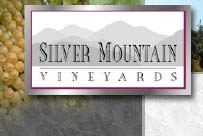 2006 Silver Mountain Vineyards Tondre Grapefield Santa Lucia Highlands Pinot Noir 14.2% alc., $38. · Sensual aromas of strawberries, cherries and spice cabinet which are echoed in the flavors. A middleweight that is quite elegant for a Santa Lucia Highlands Pinot Noir and possesses a round and satiny mouth feel. Plenty of bracing acidity creates a refreshing finish. I would like to romance this one all night.
Clos Tita David and Britta Estrada farm a 1-acre estate vineyard at 900 feet elevation in the Scotts Valley area of the Santa Cruz Mountains. The vineyard is meticulously managed by hand and all 700 vines are pruned by David, who is also the winemaker and cellar master. As a practicing dentist, his patients are always startled to see his purple fingers under his gloves during harvest. Production is tiny, with only 75 to 150 cases of Estate Pinot Noir and a few hundred cases of a Santa Cruz Mountains Cuvée Pinot Noir assembled from purchased grapes. The wines usually spend two years in premium French cooperage. The wines are sold directly and through limited retail distribution in the Santa Cruz and San Francisco Bay area. The winery is not open for tours or tasting. The website is www.clos-tita.com. 831-439-9235.
 2005 Clos Tita Cuvée Santa Cruz Mountains Pinot Noir 14.5% alc., $30. Sourced from Clos Tita and Branciforte Ridge vineyards. · Well-endowed reddish-purple robe. Deep, darker fruits on the nose with hints of pepper, cardamon and raisin. Ripe dark stone fruits, especially black cherry, highlighted by black truffle. Beautifully composed and balanced with gossamer tannins and a very smooth and silky texture. Hard not to like this Pinot.
 Hallcrest Vineyards Established in 1941, Hallcrest remains a small, family owned winery. Originally the property was a retreat for the Hall family who located here at the crest of a small hill above the town of Felton. Chaffee Hall was a prominent business attorney from San Francisco who had a passion for wine and planted the Hallcrest Estate Vineyard in 1941. At the time, Hallcrest was one of only three wineries in the Santa Cruz Mountains and the only one producing varietal wines from estate vineyards. In 1987, John Schumacher and his family bought the Hallcrest site which had been operating as Felton Empire Winery since Chaffee Hall’s retirement. The Schumachers restored the original Hallcrest name and label and converted the vineyards to sustainable agriculture, becoming the first coastal vineyard to be certified organic. John started making wine as a hobby at the age of 13 and continued his education at University California Davis. When he converted his garage into a bonded winery at age 24, he became the nation’s youngest wine proprietor. John crafts wines from many varieties but enjoys working with Pinot Noir grapes in particular. The heart of the Hallcrest brand are the vineyard designated wines which have site-specific and Santa Cruz Mountains AVA character. Many of these wines have won gold medals at prestigious wine competitions. John also produces a number of organic wines (sulfite-free) under The Organic Wine Works label. The Organic Wine Works wines were the first certified organic wines in the United States and the first wines allowed to state “organically grown and organically processed” on their label by the BATF. The Hallcrest Vineyards tasting room is open daily from 12:00 to 5:00 at 379 Felton Empire Road in Felton. The website is www.hallcrestvineyards.com. 800-699-9463.
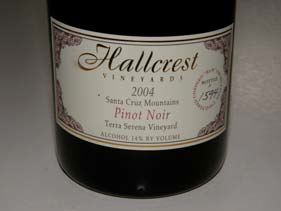 2004 Hallcrest Vineyards Terra Serena Vineyard Santa Cruz Mountains Pinot Noir 14.0% alc., 1,980 bottles, Diam closure, $35. Unfined and unfiltered. From one of the oldest dry farmed Pinot Noir vineyards in the Santa Cruz Mountains, located on northwestern facing slopes of the Corralitos Valley. · Alluring aromas of ripe cherries, spice and fresh flowers. A lighter-weighted wine that is very smooth and soft in the mouth with flavors of red cherries, raspberries, pomegranates and a lovely spice accent with a touch of oak char on the back end. Juicy and bright and very satisfying.
Heart O’ The Mountain This property is located in a relatively isolated part of Scotts Valley and has a rich history. Beginning in 1881, Pierre Cornwall produced wine here under the Santa Sada label. Cornwall named the estate “Heart of the Mountain,” or Cornwell Ranch. The noted director Alfred Hitchcock acquired the estate from the Cornwell family in 1940 and lived here on and off until 1970. According to the book, Footsteps in the Fog: Alfred Hitchcock’s San Francisco, written by Jeff Kraft and Aaron Leventhal, Hitchcock “had a passion for the San Francisco Bay Area. His connection to the region went deeper than his films. His Scott’s Valley estate became a home he adored.” He welcomed this estate as a getaway from the pressures of Hollywood. Scotts Valley is a small town located midway between Los Gatos and Santa Cruz on Highway 17 in the Santa Cruz Mountains. Hitchcock’s house consisted of 5,000 square feet built in a Spanish style and included elaborately landscaped gardens and a vineyard where reputedly he grew white Riesling that he sold to Cresta Blanca Winery. Hitchcock was a gourmand and a wine lover and lavishly entertained many Hollywood luminaries including Ingrid Bergman, Princess Grace and Prince Rainier of Monaco and Joan Fontaine, who starred in Hitchcock’s 1940 movie, Rebecca, and whose mother lived in nearby Saratoga. Photos of the house and wine cellar from my recent visit follow (entrance to wine cellar is in the upper left photo).
 
  The 154-acre property was acquired by Robert and Judy Brassfield in 1978 and they have lived there since 1979. They have lovingly preserved this historic estate including much-needed extensive renovation after the 1989 Loma Prieta earthquake. The Brassfields transformed an old horse barn on the property into a winery in the early 2000s. Robert and his brother were investors in Felton-Empire, a Santa Cruz Mountain winery that dates to the late 1970s. One of Robert’s ex-partners, Jim Bauer, planted vineyards on the Heart O’ The Mountain property and continues to manage them. There are a total of 6.6 acres planted to Dijon clones 667 and 777 (planted in 2002), 115 (planted in 2006), 828, plus Pommard (planted in 2003). The vineyard elevation is 1,100 feet.
 
 Robert told me his parents came to California as part of the “Grapes of Wrath” movement from Oklahoma and they picked fruit in the San Joaquin Valley where Robert was raised. Robert eventually became a very successful Angus beef rancher (see website for further information). The winery and vineyards became a catalyst for retirement and together with his son, Brandon, they began vinifying Pinot Noir with a consulting winemaker in 2004. A few barrels were produced in 2004, but the first commercial release came with the 2005 vintage consisting of 180 cases. The latest release of 500 cases of Estate Pinot Noir is blended from various blocks of clones 667, 777 and Pommard. A very small amount of Estate Pommard clone Pinot Noir is bottled separately and sold only to members of the winery’s wine club and visitors to the winery. Both Robert and son Brandon have learned winemaking through courses at University California Davis and their passion shows in the hand-crafted artisan wines. I visited the winery in late February 2009 and was welcomed warmly. So far, the Pommard clone seems to be the star here and brings out the best in this site. I tasted a barrel of 2007 Pommard Pinot Noir and it was, in one word, amazing. This was one of the greatest Pinot Noirs I tasted on my trip to the Santa Cruz Mountains. It was seamless and strikingly ethereal for a young wine, showing off brightly spiced cherry flavors and perfumed with exotic floral aromas that made the hair on the back of my neck stand on end. The 2006 Heart O’ The Mountain is a good wine as well. I tasted it blind during judging for the Pinot Summit coming up in April, tasted it at the winery and again at lunch at the World of Pinot Noir. Heart O’ The Mountain Pinot Noirs are sold only through an allocation list at www.heartothemountain.com. The winery is not open to the public due to its relative inaccessibility created by a narrow entrance road. Those who purchase a case of wine are invited to the annual winery party where they can tour the exterior of the historic Hitchcock house. 831-345-6133. The photo below shows Brandon (left) and Robert (right) at their winery and a barrel of 2008 Pinot Noir fermented with “wild” or natural yeast.
 2006 Heart O’ The Mountain Estate Santa Cruz Mountains Pinot Noir 14.8% alc., $48. The grapes are de-stemmed into small bins, cold soaked for 6 days, fermented in small open top bins with manual punch downs. Aged 18 months in French oak barrels and an additional 6 months in bottle before release. Unfined and unfiltered. · Dark stone fruits dominate reflecting the clonal mix. A middleweight with welcoming tannins and acidity, a silky texture and a sidecar of toast and oak enhancing rather than detracting from the flavors which veer to the ripe end of the spectrum (picked at 25 Brix), but never cross the line to raisin. I only have one small nit in that the wine struggles for balance when it warms in the glass, revealing a touch of alcoholic heat.

 Wines of Vine Hill The long history of this property was referenced on the first page. One of the ownerpartners, Nick Guerrero, and local wine writer Laura Ness have compiled a history of Vine Hill and have given me permission to summarize their research here. The property known today as Vine Hill Winery dates to 1863, when George and John Jarvis began land buys and started clearing the land for vineyards. By the 1880s, the Jarvis Brothers had planted all 300 acres to vineyards in what was then known as the Vine Hill District. The winery began to fall on hard times around the time of the general depression in 1876 and some of John’s holdings (his brother George had sold his shares and moved his “Jarvis Wine & Brandy Co.” to Santa Clara) were repossessed by the bank. In 1877, John managed to buy back some land from a business associate, Alfred Lay, and he named the land Union Vineyard, which is today’s Vine Hill Winery. Union Vineyard consisted of 63 acres of various varieties including Riesling, Semillon, Sauvignon Blanc, Mourvedre, Petite Pinot, Zinfandel, Malvoisie and Balaret with a small amount of table grapes. By 1890, the wines from Vine Hill had gained recognition as the wines were shipped to the East Coast. Energies were turning to producing premium wines but phylloxera and a disastrous fire in 1899 destroyed much of the vineyard. When John Jarvis died in 1892 at the age of 60, he left the Union Vineyard to his son Henry who planted Zinfandel vines on the property. The vineyard was continuously farmed before and after Prohibition with the vines surviving until David Bruce replanted the vineyard in 1968. The Pesenti-Locatelli family acquired the mountain vineyard in 1935. David Bruce began buying Zinfandel from Joe Locatelli in the early 1960s. Bruce bought the vineyard (today’s Vine Hill) in 1968, removed the Zinfandel vines and replanted the vineyard to the Wente clone of Pinot Noir (on its own roots). At the same time, Ken Burnap, a restaurateur from Orange County (The Hobbit) with a passion for Pinot Noir was searching for the perfect site to source Pinot Noir in Northern California. He had studied Burgundy for years, traveled to Burgundy with Joseph Swan and Kermit Lynch, and had established a number of criteria for Pinot Noir vineyard success. He was taken by Bruce’s 1968 Zinfandel produced from Bruce’s vineyard. Sipping Pinot Noir one day together, Bruce told Burnap he was selling the mountain vineyard. After performing soil samples and climate research, Ken acquired the 26-acre Vine Hill property in 1974 and named it Santa Cruz Mountain Vineyard. The first vintage of Pinot Noir from the property in 1975 was a success and wine writer Jerry Mead told Burnap that his first Pinot Noir was his best ever. However, Burnap’s Pinot Noirs were rustic, acidic and tannic and took many years to mature. They were nothing like other California Pinot Noirs then or since. Never considered a vin de garde, his Pinot Noirs still remain an important legacy in the history of Pinot Noir in California. Jeff Emery joined Burnap in 1979 and remained until the property was sold. Emery has continued the Santa Cruz Mountain Vineyard label and has maintained the tradition of producing wines that reflect the terroir of the region, but he has improved the acid, tannin and fruit balance and crafts Pinot Noirs that are more approachable early on. Santa Cruz Mountain Vineyard is now located in Santa Cruz in the Surf City Vintners complex (see page 10). Burnap sold his Vine Hill property to a group of twelve investors in 2004. The new owners are Nick and Celeste Guerrero, Nat and Laura Simons and nine other couples. Nick Guerrero has a degree in Fermentation Science from University California Davis and worked at Anheuser-Busch on the East Coast following graduation. He later obtained an MBA and MPH degree from University California Berkeley and pursued a second career in the health care field. His employer was in Ohio and he commuted from the West Coast each week from the West Coast. He had been making wine in his garage since 1991 and five couples eventually joined in. Disenchanted with the weekly travel and inspired by his winemaking efforts, he decided to take on the wine business full time. In 2005 the owners hired Sal Godinez, an experienced winemaker trained at Saintsbury in the Napa Valley and a close friend of Guerrero. Godinez had lived next door to Guerrero’s mother in St. Helena and Guerrero was impressed with his talents. At Saintsbury, Godinez helped craft the first Dijon clone based wine from the Brown Ranch Vineyard in 1996. The original Santa Cruz Mountain Vineyard has been replanted (the last vintage from the original plantings was 2004) with more than twice the density (from 3,000 vines to 7,000 vines) using two rootstocks and Dijon clones 115, 667, 777 and 828. Because the original vines were diseased, only one vine was saved. Rachel Ormes is the vineyard manager. The new owner’s intent is to carry on the long and storied legacy of grape growing and winemaking at this historic property. Two labels are under the Wines of Vine Hill umbrella: Gatos Locos of Vine Hill, value priced wines for fun drinking ( 2005 and 2006 vintages available, $29 to $41) and Cumbre of Vine Hill, which are serious Santa Cruz Mountains Pinot Noirs (2006 vintage in release, $49 to $59). Current production is less than 1,000 cases. The wines are available on the website at www.winesofvinehill.com. 831-427-0436. The Cumbre of Vine Hill Pinot Noirs were tasted at the winery and at the World of Pinot Noir in early March. The wines from this subregion typically take awhile to come around and can age very well. The photo below shows the newly planted Vine Hill Vineyard and the three Gatos Locos of Vine Hill (Crazy Cats: Sal Godinez on the left, Rachel Ormes in the center and Nick Guerrero on the right).
 
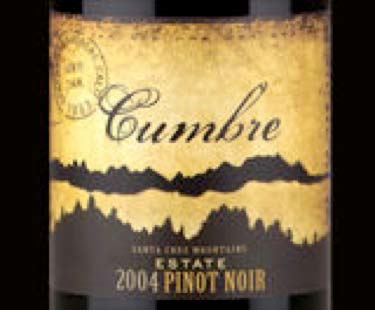 2004 Cumbre Estate Santa Cruz Mountains Pinot Noir 14.7% alc., $79. The last vintage of the original plantings at Santa Cruz Mountain Vineyard. · Intense dark reddish-purple color. Very ripe aromas of roasted black fruits and raisin. Dark and deep with almost impenetrable fruit buttressed by substantial tannins and finishing with orange peel-livened acidity. Drinks like a Petite Syrah. Not for the faint of heart now but it will be interesting to see how this wine evolves 10 years down the line.
 2006 Cumbre Raffaelli Vineyard Santa Cruz Mountains Pinot Noir 14.5% alc., 192 cases, $59. This 2+acre vineyard is located in Soquel in the Los Ranchos subregion at an elevation of 400 to 500 feet. Degree days are Region II. The vines are 25 years old and yield 3.5 tons per acre. The clones are 667, 777 and Pommard. The vineyard is hand farmed by owner Angelo Raffaelli. Brix at harvest was 26.3. · Intensely fruity nose featuring crushed dark berries with hints of wet stone, herbs, and a whiff of alcohol. Rich and earthy, this robust wine is packed with a succulent core of blackberries and black raspberries yet displaying supple dry tannins and an uplifting finish.
2006 Cumbre Hicks Family Vineyard Santa Cruz Mountains Pinot Noir 14.3% alc., 190 cases, $59. This vineyard is located in the Corralitos/Pleasant Valley subregion at 500 feet. The soil is rich for the area as it was the former home of a small horse farm - Un Corralito. Degree days are Region II. The vines are 5 to 6 years old planted to Dijon clones 115 and 667 and yielding 4 tons per acre. This wine is 90% clone 115. Brix at harvest was 26.7. · Rich and jammy strawberry and raspberry fruit is laced with toast, anise, spearmint, white pepper, briar and oak. There is a definite minerality evident. Alcohol peeks out on the nose and in the finish. The tannins are very soft and the texture is velvety.
Martin Alfaro Joseph Martin, engineer-turned-winemaker, crafts vineyard-designated Pinot Noirs from two sources in the Santa Cruz Mountains as well as vineyards in the Santa Lucia Highlands and San Benito County. Martin also crafts the lineup of wines at Alfaro Family Winery & Vineyards in Corralitos. The wines are sensibly priced and available on the website at www.martinalfaro.com. 831-728-5172.
2007 Martin Alfaro Schultze Family Vineyard Santa Cruz Mountains Pinot Noir 14.5% alc., 235 cases, $36. The Schultze Family Vineyard is planted to 15 acres of Dijon clones 115, 667, 777 and 2A and Pommard 4. Grapes were 100% de-stemmed and lightly crushed into small open-top fermenters. A cold soak of 5 days ensued. Fermentation was traditional and the wine was aged 10 months on the lees in 40% new French oak barrels. Unfined and unfiltered. · Dark and ripe fruits with underlying herbs and earthiness. A bit rough now in its youth but shows the stuffing and balance to blossom nicely in a year.
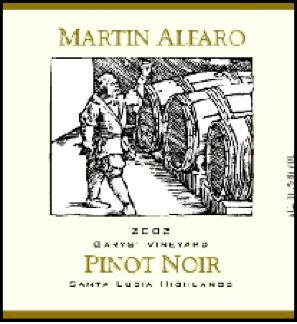 2007 Martin Alfaro Deer Park Vineyard Santa Cruz Mountains Pinot Noir 14.5% alc., 450 cases, $33. This vineyard is owned by Dan Lester and managed by Prudy Foxx. Multiple clones are planted including 115, 667, 777, 37 (Mount Eden), 2A and 23 (Mariafeld). The closeness of the vineyard to Monterey Bay allows the grapes to attain full physiological ripeness without excessive Brix levels. · Very forward for a 2007 vintage wine. Attractive aromas and flavors of dark fruits tending toward the red spectrum with tasty spice. The tannins are fine and supple, the acidity is just right and the fruit lingers on an aromatic finish. Pinot Noirs from this vineyard have always appealed to me, perhaps because of the diverse clonal mix.
Pleasant Valley Vineyards Craig and Cathy Handley farm an estate vineyard on Pleasant Valley Road in Aptos, tucked next to a grove of coastal redwoods and only five miles from the Monterey Bay. Established in 1996, the vineyard is planted to Dijon clones. The vines are lovingly hand pruned, hedged, de-leafed and harvested. The wine is handcrafted from estate fruit, made in very small lots of 2 to 4 barrels and bottled on site. There are a number of musicians in the family and this is reflected in the unique label for the Estate Dylan David Pinot Noir. For the 2007 vintage, Pinot Noir will also be produced from the Lester family’s Deer Park Vineyard in Corralitos. Craig has spearheaded the Corralitos Wine Trail which consists of four relatively new small wineries located in Corralitos, the most southerly region of the Santa Cruz Mountains appellation. The wineries are open for special Corralitos Wine Trail Open House events. Tasting is also available by appointment (831-728-2826). The website is www.pvvines.com.

2005 Pleasant Valley Vineyards Dylan David Family Estate Reserve Santa Cruz Mountains Pinot Noir 14.9% alc., $85. Unfined and unfiltered. · On the nose there are aromas of ripe black cherry fruit, stem and anise. The ripe fruit theme carries through on the palate with a vein of stemminess in the background. Soft tannins, lively acidity and refreshing citric tang on the finish.
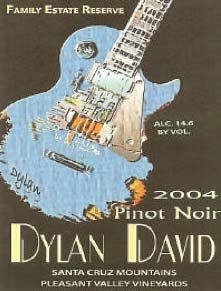 2006 Pleasant Valley Vineyards Dylan David Family Estate Reserve Santa Cruz Mountains Pinot Noir 14.9% alc., $85. · Dreamy aromas of cherries, clove and cardamon spices, cola and red hard candy. The palate sings the same tune with raspberry flavors added in. The fruit is like bombs bursting in the air, coming in waves. Fresh, clean and impeccably balanced with complete integration of the alcohol. If you like clove, you will go ga-ga over this one.
Barrel sample. Clone 667. · Rich aromas of fresh berry jam and confected cherries draw you in. Delicious melange of red berries with a touch of citrus on the palate. Perfectly harmonious with no tannin to speak of and refreshing acidity to keep you reaching for another sip. A very seductive wine with tremendous upside potential.
Windy Oaks Estate Vineyard & Winery Those who read the PinotFile regularly know that I am a big fan of Windy Oaks Pinot Noirs and Chardonnay. Forget all those big name cult Pinot Noirs in California, this is the real deal. Unfortunately, there are only 2,200 cases to go around and many pinotphiles are already clued in. Jim and Judy Schultze have used their over 20 years of interest and experience in artisan winemaking to create Windy Oaks. The Burgundian varieties, Pinot Noir and Chardonnay, are produced from a 19-acre vineyard (18 acres of Pinot Noir, 1 acre of Chardonnay) located 1,000 feet on a ridge overlooking the Monterey Bay. The Schultzes have lived in Australia and Europe and visit Burgundy yearly to exchange information and meet with their coopers. They have a clear sense of the Burgundian methods of winegrowing. The vineyard was planted between 1996 and 1999 and is farmed according to organic and biodynamic principles with a permanent cover crop and direct measurement of plant water status. The vines are all hand-tended. The microclimate allows for an extremely long growing season with bud break typically in late February and harvest in mid-October. Typically, Windy Oaks Estate Vineyard is the last to be harvested in the Santa Cruz Mountains. Physiologically ripe grapes are harvested without high Brix with the grapes possessing a balanced natural acidity. A small winery is beautifully laid out and equipped on the property allowing for the entire production of the wines including bottling to be performed on site.

 All the wines are made with 100% estate grapes. Extreme minimal intervention is employed with no additives, 50% wild yeast fermentations, ML in barrel, 25 to 30 day fermentation periods and no settling before barrel, no racking in barrel. About 30% to 40% whole cluster is used. All winemaking is done by gravity from crush to final bottling. Long barrel aging is employed with a high percentage of new French oak. For example, the Reserve is typically aged for 25 months in 75% new French oak. Special French oak barrels are chosen for their tight grain and only 3 year air-dried (seasoned) wood staves are used. When I visited in late January 2009, Jim told me he had been in Burgundy at the Francois Freres cooperage and was offered and bought some 4 year air-dried barrels that DRC had reserved but not used. He also showed me one 5 year air-dried barrel with gold staves (photo).

Why is the length of seasoning of oak staves important? Staves are allowed to dry in the open air, exposed to the natural elements of sun, wind and rain, which removes harsh flavors and other elements from the oak. Seasoning in the open air also develops and releases spicy and sweet elements. Longer drying regimes enhance the removal of undesirable elements while allowing additional time for welcome elements to emerge. Jim is never satisfied and works diligently on new techniques to refine his wines. He has run trials and released Pinot Noirs that are wood-fermented, wild yeast-fermented, and produced limited bottlings from Burgundy suitcase clones. Despite the multiple winemaking approaches, the hallmark of Windy Oaks Estate is consistency. Year in and year out, the wines are reliably and often spectacularly crafted. With Chambolle Musigny as the model, the Schultzes are quietly crafting some of the best and most intriguing Pinot Noir made in California. The wines are sold almost entirely to select restaurants and mailing list devotees. Tours and tasting are available by appointment. The website is www.windyoaksestate.com and the phone is 831-786- WINE. A limited number of wines are for sale on the website.

2004 Windy Oaks Estate Proprietor’s Reserve Santa Cruz Mountains Pinot Noir 14.3% alc., 175 cases, $45. · This is a “Wow” wine. Wonderful scents of spiced cherries, sandalwood, caramel and grass. The flavor trio of cherries, mocha and cinnamon spice are delicious. The whole package is impeccably balanced and elegant with an endless finish. A pretty and diaphanous wine that is tres Pinot.
2005 Windy Oaks Estate Cuvée Santa Cruz Mountains Pinot Noir 14.3% alc., 285 cases, $35. The cuvée is a blend of clones from the estate vineyard, meant to be a wine that can be drunk every day with almost anything. Think of it as the younger sister of the Proprietor’s Reserve. · Oak char and smoke dominate the fruit aromas and a bit of heat peaks out over time in the glass. Slightly tart red and black berry fruit flavors are linear with barely noticeable tannins and lively acidity. Fairly plush and mouth filling but not exciting.
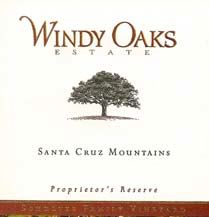 2005 Windy Oaks Estate Proprietor’s Reserve Santa Cruz Mountains Pinot Noir 14.3% alc., $55. · Shy nose that opens beautifully with time in the glass revealing black cherries and oak with a minerality in the background. A little darker fruit profile and noticeably fuller than the 2004 vintage, tasting of jam on toast with just the slightest hint of spice. Smooth as a baby’s bottom, perfectly balanced, with a lasting impression on the long finish that leaves a touch of heat in its wake. This one is more California, the 2004 vintage is more DRC.
2005 Windy Oaks Estate Wood Tank Fermented Limited Release Santa Cruz Mountains Pinot Noir 14.3% alc., 26 cases, $44. · The nose is loaded with red fruits and exotic Indian spices. A middleweight wine with charming flavors of red cherries and strawberries with a touch of oak and brioche added in for interest. The wine builds in intensity and interest with time in the glass, leaving a memorable aromatic impression on the endless finish. Plenty of swag here.
2006 Windy Oaks Estate Cuvée Santa Cruz Mountains Pinot Noir 13.9% alc., 435 cases, $38. 15 months in 50% new French oak barrels. · A softer nose highlighting red fruits, light toast spice and a touch of funk. The red-toned fruit flavors are brisk and refreshing, even a little steely. Very smooth in texture with no obtrusive oak or tannins. Surprisingly good with a pastrami sandwich.
 2006 Windy Oaks Estate Proprietor’s Reserve Santa Cruz Mountains Pinot Noir 14.1% alc., 345 cases, $60. Primarily sourced from the 1.5 acre Bay Block planting of the original 3-acre vineyard. Aged 22 months in 80% new French oak. The signature Windy Oaks Estate wine. · This wine starts out shy and ends in ecstasy. Plenty of patience (foreplay) is required. The nose unfolds to reveal well spiced cherries, sage, vanillin and a touch of flowers. The fruit is demure but surrounds the tongue with fullness. Tangy and spicy with spot on balance. Always the best wine in the Windy Oaks cellar.
2006 Windy Oaks Estate Wood Tank Fermented Limited Release Santa Cruz Mountains Pinot Noir 14.2% alc., 47 cases, $55. Aged 21 months in 75% new French oak. · Heavenly and complex nose with a classroom full of black cherry fruit, cola, and cardamon spice. Very flavorful darker red fruits with an underlying earthiness and a citric note on the finish. Not the intensity or punch of the Proprietor’s Reserve, but a perfectly fine drink.
2006 Windy Oaks Estate Henry’s Block Santa Cruz Mountains PInot Noir 13.9% alc., 145 cases, $45. Named after Judy Schultze’s father, this is 100% Wädenswil clone and from one of the oldest blocks in the vineyard. Aged 21 months in 65% new French oak. · A beautifully composed and balanced Pinot Noir featuring juicy raspberries, herbs, cedar and barnyard on the nose. The flavors follow in step adding a hint of dirt and root beer. Feminine in spirit but packed with flavor, and like all Windy Oaks wines, impeccably balanced.
 Although not formerly reviewed, I can vouch for the other 2006 Windy Oaks Estate wines as well. On my recent visit to the Santa Cruz Mountains, I attended a dinner in Santa Cruz which turned out to be spectacular. The young and talented chef at Gabriella Café, Bradford Briske, took the time to taste all the wines in advance and the resulting food and wine matches brought me looking to the heavens and saying thanks. I have duplicated the menu below for your interest. I should add a few comments about the other Windy Oaks Estate wines that were not formally reviewed for this issue. The One-Acre Chardonnay is a perfect compromise between the non-oak fermented and heavily-oaked and endowed contrasting styles of California Chardonnays (Windy Oaks Estate Chardonnay, $38). Diane’s Block Pinot Noir is sourced from a 4-acre vineyard located in Aptos a short distance from Windy Oaks Estate that was planted and is farmed by the Schultzes. It is a very fruit-forward wine. (2006 Windy Oaks Estate Diane’s Block, 341 cases, $45). The Wild Yeast Pinot Noir is a 4 barrel blend of 100% native yeast fermented Pinot Noir. This is quite earthy and has become very popular to Windy Oaks disciples and can take on voluptuous foods. (2006 Windy Oaks Estate Wild Yeast, 96 cases, $55). In 2009, there will be a value-priced Windy Oaks Pinot Noir added to the lineup called “Terra Narro” ($30), making a total of 9 unique Pinot Noirs for the 2009 vintage.
 The 2004 Windy Oaks Estate Special Burgundian Clone Pinot Noir was the first release from a special half-block at the top of the vineyard ridge planted to a “suitcase clone” from Vosne-Romanee in Burgundy. Jim tends to this vineyard block himself, doing everything from pruning to leaf pulling to tucking vines. Its taste is similar to its Burgundian counterpart. It is a celebratory release presented in a wood box with a silk screen image of a poster created for the Schultzes by the French poster artist, Jean-Pierre Got. Aged 27 months in 100% new French oak, 26 cases, $95. I opened a bottle awhile back at a French restaurant and found the wine stunning. Unfortunately, there is only a 2 bottle allocation - Boo-Hoo.

A few more tastes of the Santa Cruz Mountains
2006 Clos La Chance Santa Cruz Mountains Pinot Noir 14.5% alc., $22. This winery is located in San Martin, about 45 minutes from the Santa Cruz Mountains but the owners, Bill and Brenda Murphy, farm a number of small vineyards in the Mountains. · Demure aromas of cherries, strawberries and fresh mowed grass. Moderately light flavors of tart red cherry and strawberry with a faint kiss of oak. Silky tannins and admirable finesse.
2006 Salamandre Meadowridge Vineyard Santa Cruz Mountains Pinot Noir 14.0% alc., $37. · Light in color and red-toned. Scents of oak spice, especially vanillin, plus grass, hay, and a hint of alcohol. Cherry-driven flavors with a touch of Asian spice and citrus peel. Light in body, very soft and easy to drink. A simple Pinot Noir.
14.2% alc.. · Dark reddish-violet color. Darkly fruited nose with char and raisin notes. Flavors of roasted plum and prune with flamboyant tannins and a decent underpinning of acidity.
Santa Cruz Mountains EventsSanta Cruz Mountains Winegrowers Association: www.scmwa.com 831-479-WINE (9463). A listing of wineries with tasting room hours, local accommodations, self-guided tour options and maps, events and information on the Santa Cruz Mountains Wine Club. The best source of information on cruizin’ the Santa Cruz Mountains and the annual events in the Mountains. Another useful website is www.winecountry.com.
 Pinot Paradise Fifth annual event will be March 28-29, 2009 featuring the six subregions of the Santa Cruz Mountains. A self-guided Pinot Pathways program will be held on March 28 followed by an all day Pinot Noir immersion in Campbell consisting of a Technical Session followed by the Grand Cruz Tasting where Pinot Noirs from 35 local wineries are paired with gourmet food from area restaurants. Tickets are available at www.scmwa.com.
 Passport Program $40 entitles you to receive a Passport to wineries of the Santa Cruz Mountains, including many that are not open to the public at other times. Participating Passport wineries are open on the third Saturday in January, April, July and November. The Spring Wine Passport will be April 18, 2009. Wine & Crab Taste Off Local Santa Cruz area restaurants create flavorful dishes with local crab and regional wines are paired with the fare. Held in January in conjunction with the Winter Passport Program. Santa Cruz Mountains Wine Express May 17, 2009 at Roaring Camp Railroad in Felton. Food, music, auction and a train ride through the Santa Cruz Mountains. Most Santa Cruz Mountains wineries will be pouring. Details at www.scmwa.com/wine_auction.htm. Vintner’s Festival This event is held the first two weekends in June at participating wineries and restaurants throughout the area. To join the festivities, buy a glass at any festival location. Santa Cruz County Fair Commercial Wine Competition The medal winners are posted on the Santa Cruz Winegrower’s Association website in mid-September each year. The Ultimate Winemakers Dinner An annual event held in February. The recent dinner was held at Shadowbrook Restaurant in Capitola.
* A wonderful resource for information and assistance in visiting the Santa Cruz Mountains is Laura Ness. She lives in the Mountains and is well-connected to the wineries and events in the region. She will assist you in your travel plans and winery visits and can be reached at 408-395-0965. I am happy to assist as well.
vinocruz Vinocruz is a comfortable speciality wine retail store with a selection of over 150 wines made by more than 60 wineries, all within the Santa Cruz Mountains AVA. The store is not only an excellent source for small production, hard to find local wines, but owners J-P Correa and Jeffrey Kongslie hold regular informative wine tastings and art exhibits. A listing of available wines is on the website at www.vinocruz.com. The store is next to the Museum of Art and History in downtown Santa Cruz. 831-426-VINO (8466). The store’s Wine Club (Vinoclub) sends out three different bottles from the best Santa Cruz Mountain wineries four times a year.
EquinoxPaul Masson left a legacy of sparkling wine in the Santa Cruz Mountains. He introduced his first sparkling wine labeled “champagne” in 1892 under the Almaden label and eventually became known as the “Champagne King of California.” Barry Jackson, the owner and winemaker of Equinox, is the lone holdover methode champenoise artisan sparkling wine producer in the Santa Cruz Mountains. The style is a synthesis of Santa Cruz Mountain fruit picked at 20º to 21º Brix (enhanced by barrel fermentation and barrel aged) and bottle fermentation with extended aging (a minimum en tirage of 4 years) on the yeast. The wines are finished with minimal or zero dosage to better display the marriage of the cuvée and the yeast character from the extended en tirage. Dosage is often used to cover up flaws in cheap sparkling wine. The first Equinox sparkling wine was produced in 1989. Currently, Jackson produces 5,000 cases of both still and sparkling wine, much of it under contract. I tasted three Equinox sparkling wines, all of which were quite impressive. These are highly unique artisan wines that take considerable skill and time to craft.
12.5% alc., 200 cases, unreleased. Sourced from Meley Vineyard in Bonny Doon. · The nose is very exotic revealing banana, lemon and vanilla. Rich, full and creamy with tropical flavors.
12.5% alc., <300 cases, $50. 100% Chardonnay sourced from Trout Gulch Vineyard. · Aged en tirage 10 years. Lemon, toast, brioche and ripe pear with bright acidity.
12.5% alc., 25 cases, unreleased. Chardonnay sourced from Trout Gulch Vineyard. · An incredible wine featuring scents of brioche, buttered toast and yeast. Citrus flavors form the core with hints of apple and nuts. The finish is very tight and cleansing.
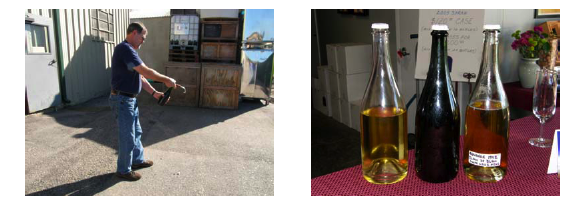 Equinox is located in an industrial warehouse center near the Surf City Vintner complex in Santa Cruz. Call Barry Jackson at 831-338-2646 to schedule a tasting or order wine. The website is www.equinoxwine.com. Several vintages are currently available. |